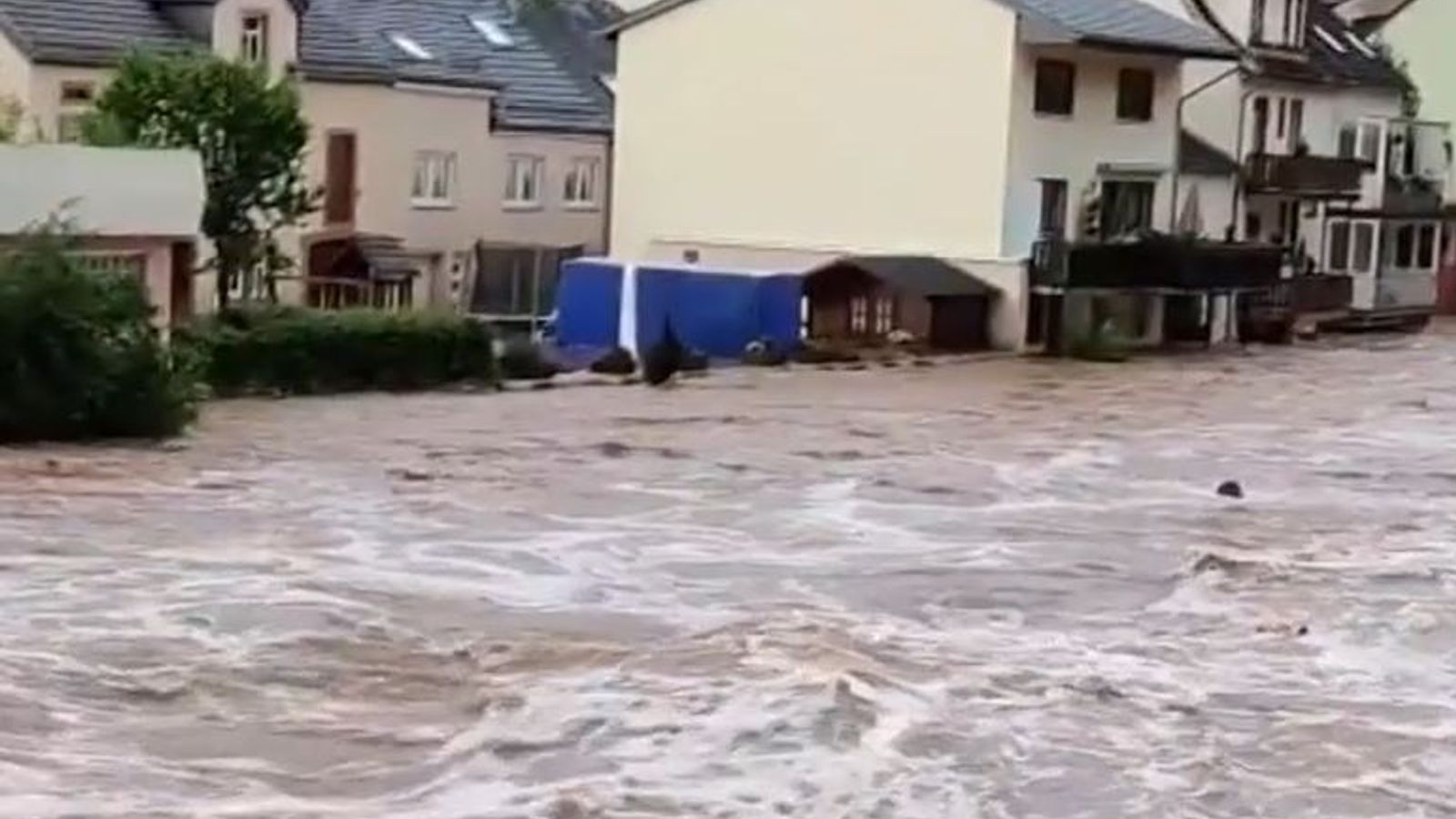

In the meantime, some of the waste is being transferred to sites to dry before being incinerated. But the problem is that so much of the wood from the flood-hit areas is just too wet. "We take out the iron, of course, and wood that's still worth saving. "But a lot of what we've been receiving in the last week has been damaged to such an extent that it's just made smaller and put in the incinerator," says Andre Lotz, chief executive of waste and recycling service AVG Cologne. Under normal circumstances, the bulky waste would also be separated. 'Terminator' is the nickname for the machine that crushes the waste to make it more compact Image: Kate Brady/DW In front of the mountain range of refuse, a tiny green machine, the "Terminator," gets to work on making waste more compact before it's sent to an incinerator. "But where else is it going to go?" he asks. But this stuff from the floods you can smell way beyond the facility," says Schäfer. "Usually the smell of the compost isn't a problem. The stench from the mud-soaked waste hangs in the air. Ralf Schäfer is currently repurposing his compost facility in nearby Müttinghoven to help ease the strain on other facilities. We really can't say how long it will take."

On top of that, you have this huge, decentralized location. "Some people in these affected areas are only now returning from their vacation to sort out their homes. RSAG is expecting a second wave as people throw out the more bulky waste. Extra personnel has also been called in to work weekends.īut there is no end in sight. Ralf Schäfer is repurposing his compost facility to take in other waste Image: Kate Brady/DWĬollection trucks are back in action, picking up thousands of tons of waste. Our collection vehicles were stuck in the water, and the storage facilities were underwater too," says RSAG public affairs officer Christof Gerharz. "Initially, we couldn't pick up any waste. Some companies like RSAG, a waste management company in the Rhein-Sieg area, had to deal with their own problems caused by the flooding.

Local building contractors, farmers and the fire brigade have joined forces with waste management companies, which are being stretched to their limits. Like much of the recovery in the flood-hit regions, waste removal has been a joint effort. "To protect our natural resources as much as possible, undamaged items such as metal furniture, bicycles or dishes should be cleaned, repaired if necessary and reused." Ahrweiler resident Carmen Peitz-von-den-Eichen is set to start rebuilding her life Image: Kate Brady/DW Team effort Marieke Hoffmann, DUH project leader for recycling management, says the large amounts of refuse in flooded areas create problems for the environment not only directly in terms of waste disposal, but also because of the pollution caused by the procurement of new products. It says this will limit the environmental impact of the excess waste. The association Environmental Action Germany (DUH) has warned that the mounds of homeware should be stored on solid surfaces, such as concrete, to prevent pollutants from seeping into the groundwater. An interim solution: Refuse has been piled up alongside the road leading out of Ahrweiler Image: Kate Brady/DW One of the biggest challenges is finding space for the unprecedented amounts of refuse. Instead, it's been moved to decentralized locations on the edge of town. Though the streets are largely clear, much of the bulky waste is yet to reach a recycling facility. "You're not constantly looking and thinking, 'Maybe there's still something there I could save.'" There's a sense of closure that comes with that," Kroll says. "You don't walk by every day anymore and see what you've lost. Scrawled on the door were the words: "Thank God we're alive.

Just a week ago, a fridge stood in front of her parents' house, alphabet magnets still attached.
#Germany flood full
Kroll ( who did not wish to give her full name, Eds.). "It's a huge relief that the garbage has been moved," says one resident, Ms.


 0 kommentar(er)
0 kommentar(er)
